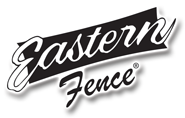
So, you’re out building your DIY fence in your yard. You can see the finish line, but realize that you didn’t purchase enough fencing material. DIY fence projects can be a lot of fun for anyone who loves using their hands. In order to save the most amount of money and effort, you need to make sure that you are ordering the right amount of material for your project. There a couple aspects of the building process that you need to take care of before you jump right into digging holes in the yard. This is how you can accurately determine how much fencing material you need for your DIY fence project.
Do You Know Your Property Lines?
Step 1: This is the absolute first question that you need to ask yourself- whether you are building your own fence or if you are having it installed. Check and double check with the neighbors to determine your property lines before you start the project with fence measurements. The last thing you want to do is buy your fencing materials, build a fence, and have to tear it down because it is on your neighbor’s property. Its also essential that you know where utilities like the sewer system and other obstructions are located. Obviously, you can’t build a fence on top of a tree, so you’ll need to take objects like that into consideration. Once you understand just where your property lines and obstructions are, you can move onto step two.
Measuring the Yard
Step 2: Measuring the yard. This step has proved to be a bit tricky for those of you doing DIY projects, so make sure to be careful when measuring the yard. First, you need to measure the perimeter of your lawn space in feet and divide that by the number of feet that one fence panel is. Typical fence panels are between 6 and 8 feet.
Step 3: The corners. Place a marker on each corner. Keep in mind that a corner is any place where two fence panels will meet at a 90 degree angle.
Step 4: Begin line posting. Line posting is the process of marking each spot where a fence panel is going to be laid. The markers are going to be placed in intervals the same length as the length of one panel. For example, if one panel is 6 feet wide, the markers will be place exactly 6 feet apart. If you come to an area where a 6 foot panel will not fit, you can cut the panel so that it fits where you need it, then place the marker accordingly.
Step 5: End posts. End posts are going to be placed where the fence is going to end. This could be next your your house, a shed, a tree, or any other object.
Once you’ve completed all 5 steps and have decided the type of fence material that you want, you’re ready to install your DIY fence! Once you’ve determined how much material you need, get in contact with us here at Frederick FenceCo!
Count on Frederick Fence for All of Your Fence Needs
If you’re in the market for a fence, contact us today and we’ll send out one of our expert fence consultants to show you how a fence can be the perfect fence solution for you and your family.
Use our online chat feature by clicking on the Live Chat button on the left of this page and someone will answer your fencing measurement questions during normal business hours. If you want to see some great samples of materials so you can build your own fence, stop by our showroom on Tilco Drive in Frederick, Maryland.







